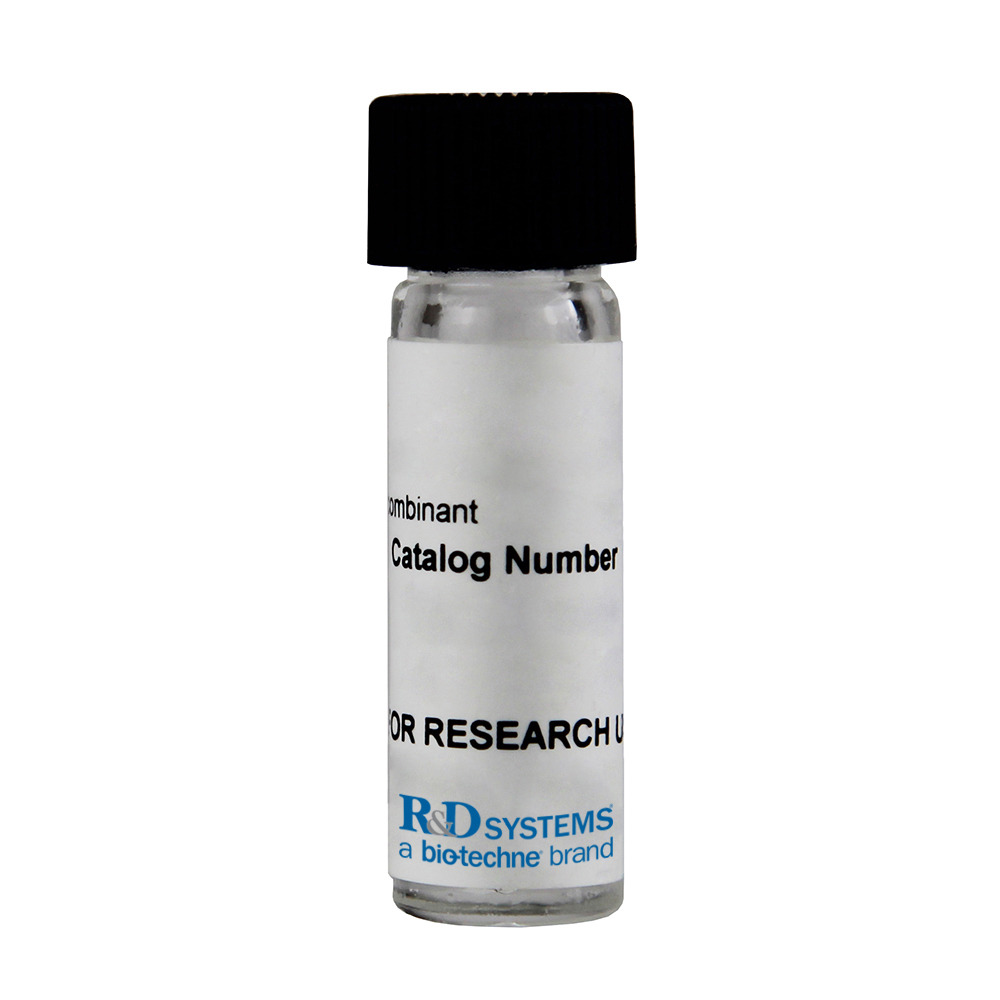

 下载产品说明书
下载产品说明书 下载SDS
下载SDS 用小程序,查商品更便捷
用小程序,查商品更便捷



 收藏
收藏
 对比
对比 咨询
咨询Carrier Free
CF stands for Carrier Free (CF). We typically add Bovine Serum Albumin (BSA) as a carrier protein to our recombinant proteins. Adding a carrier protein enhances protein stability, increases shelf-life, and allows the recombinant protein to be stored at a more dilute concentration. The carrier free version does not contain BSA.
In general, we advise purchasing the recombinant protein with BSA for use in cell or tissue culture, or as an ELISA standard. In contrast, the carrier free protein is recommended for applications, in which the presence of BSA could interfere.
5326-ST
| Formulation | Supplied as a 0.2 μm filtered solution in Tris and NaCl. |
| Shipping | The product is shipped with dry ice or equivalent. Upon receipt, store it immediately at the temperature recommended below. |
| Stability & Storage: | Use a manual defrost freezer and avoid repeated freeze-thaw cycles.
|
Recombinant Human CHST6 Protein, CF Summary
Product Specifications
Ser27-Asn395, with an N-terminal 6-His tag
Accession # NP_067628
Analysis

Background: Carbohydrate Sulfotransferase 6/CHST6
The CHST family is comprised of 14 genes in humans. All members of this family are Golgi-localized type II membrane proteins. Only the luminal and enzymatic domain is expressed in each of R&D Systems recombinant CHST proteins. These enzymes transfer sulfate (i.e., sulfonate) onto the 6-O or 4-O positions of GalNAc, Gal and GlcNAc residues on glycoproteins, proteoglycans and glycolipids (1). This sulfation often creates specific epitopes that can be recognized by extracellular matrix proteins, cell surface receptors and viruses (2). CHST6, also designated as corneal N-acetylglucosamine-6-O-sulfotransferase (3) or N-acetylglucosamine 6‑O‑sulfotransferase 5 (1), transfers sulfate to position 6 of non‑reducing GlcNAc residues of keratan sulfate found in the corneal stroma. It also acts on the non‑reducing terminal GlcNAc residues of carbohydrate substrates that have poly-N-acetyllactosamine structures (1). Defects in CHST6 cause macular corneal dystrophy, an autosomal recessive disease characterized by corneal opacities (3). The activity of the recombinant CHST6 has been measured with a phosphatase-coupled sulfotransferase assay (4).
- Hemmerich, S. and Rosen, S. (2000) Glycobiology 10:849.
- Bowman, K. G. and Bertozzi, C. R. (1999) Chem. Biol. 5:447.
- Akama, T. O. et al. (2000) Nat. Genet. 26:237.
- Prather, B. et al. (2012) Anal. Biochem. 423:86.








 危险品化学品经营许可证(不带存储) 许可证编号:沪(杨)应急管危经许[2022]202944(QY)
危险品化学品经营许可证(不带存储) 许可证编号:沪(杨)应急管危经许[2022]202944(QY)  营业执照(三证合一)
营业执照(三证合一)